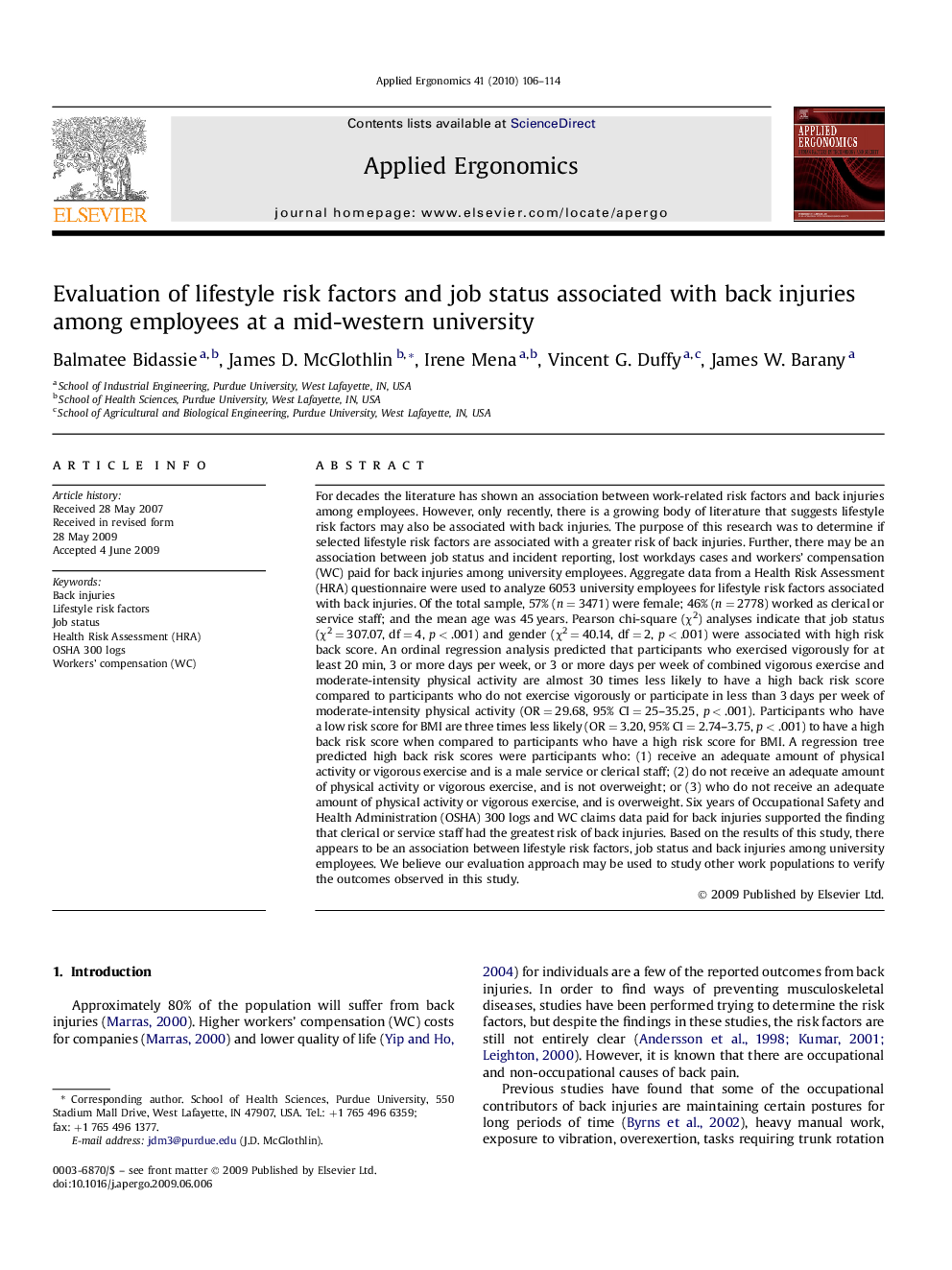| Article ID | Journal | Published Year | Pages | File Type |
|---|---|---|---|---|
| 548638 | Applied Ergonomics | 2010 | 9 Pages |
For decades the literature has shown an association between work-related risk factors and back injuries among employees. However, only recently, there is a growing body of literature that suggests lifestyle risk factors may also be associated with back injuries. The purpose of this research was to determine if selected lifestyle risk factors are associated with a greater risk of back injuries. Further, there may be an association between job status and incident reporting, lost workdays cases and workers' compensation (WC) paid for back injuries among university employees. Aggregate data from a Health Risk Assessment (HRA) questionnaire were used to analyze 6053 university employees for lifestyle risk factors associated with back injuries. Of the total sample, 57% (n = 3471) were female; 46% (n = 2778) worked as clerical or service staff; and the mean age was 45 years. Pearson chi-square (χ2) analyses indicate that job status (χ2 = 307.07, df = 4, p < .001) and gender (χ2 = 40.14, df = 2, p < .001) were associated with high risk back score. An ordinal regression analysis predicted that participants who exercised vigorously for at least 20 min, 3 or more days per week, or 3 or more days per week of combined vigorous exercise and moderate-intensity physical activity are almost 30 times less likely to have a high back risk score compared to participants who do not exercise vigorously or participate in less than 3 days per week of moderate-intensity physical activity (OR = 29.68, 95% CI = 25–35.25, p < .001). Participants who have a low risk score for BMI are three times less likely (OR = 3.20, 95% CI = 2.74–3.75, p < .001) to have a high back risk score when compared to participants who have a high risk score for BMI. A regression tree predicted high back risk scores were participants who: (1) receive an adequate amount of physical activity or vigorous exercise and is a male service or clerical staff; (2) do not receive an adequate amount of physical activity or vigorous exercise, and is not overweight; or (3) who do not receive an adequate amount of physical activity or vigorous exercise, and is overweight. Six years of Occupational Safety and Health Administration (OSHA) 300 logs and WC claims data paid for back injuries supported the finding that clerical or service staff had the greatest risk of back injuries. Based on the results of this study, there appears to be an association between lifestyle risk factors, job status and back injuries among university employees. We believe our evaluation approach may be used to study other work populations to verify the outcomes observed in this study.
